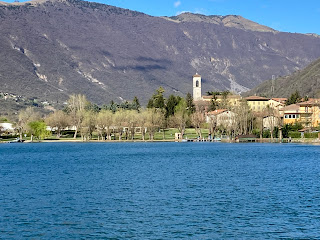The other talented Moroni from Bergamo
.jpg) |
| Moroni's home town of Albino occupies a position in Val Seriana, near Bergamo |
Bergamo-born architect Andrea Moroni, who designed many beautiful buildings in Padua and the Veneto region, died on 28 April 1560, 536 years ago today, in Padua.
Moroni designed acclaimed Renaissance buildings but
has tended to be overlooked by architectural historians because his career
coincided with that of Andrea Palladio.
Born into a family of stonecutters, Moroni was the
cousin and contemporary of Giovan Battista Moroni, the brilliant portrait painter. They
were both born in Albino, a comune - municipality - about 14km (nine miles) to the north east of Bergamo, in Val Seriana, which was
given the honorary title of city in 1991.
Moroni the architect has works attributed to him in
Brescia, another city in Lombardy about 50 km (31 miles) to the south east of Bergamo.
He is known to have been in the city between 1527 and 1532, where he built a
choir for the monastery of Santa Giulia.
He probably also designed the building in which the
nuns could attend mass in the monastery of Santa Giulia and worked on the
church of San Faustino.
As a result, he made a name for himself with the Benedictine
Order and obtained commissions for two Benedictine churches in Padua, Santa
Maria di Praglia and the more famous Basilica di Santa Giustina.
 |
| Andrea Moroni was the architect behind the Basilica di Santa Giustina in Padua |
He was commissioned by the Venetian Government to
build the Palazzo del Podestà, which is now known as Palazzo
Moroni in Via VIII Febbraio, and is currently the seat of Padua city Council.
It is considered one of the most significant Renaissance buildings in the
entire Veneto region.
Moroni was also involved in the construction of the
Orto Botanico, Padua’s famous botanical gardens, where medicinal plants were
grown, and he designed some of the university buildings.
It is known that he supervised the construction of Palazzo
del Bo, the main university building in the city, but there
is some controversy over who designed the palace’s beautiful internal
courtyard. Famous names such as Jacopo Sansovino and Palladio have been suggested,
rather than Moroni, contributing to his talent tending to be overlooked over
the centuries.

.jpg)
.PNG)
.png)
















